New Boston Historical Society
New Boston, New Hampshire
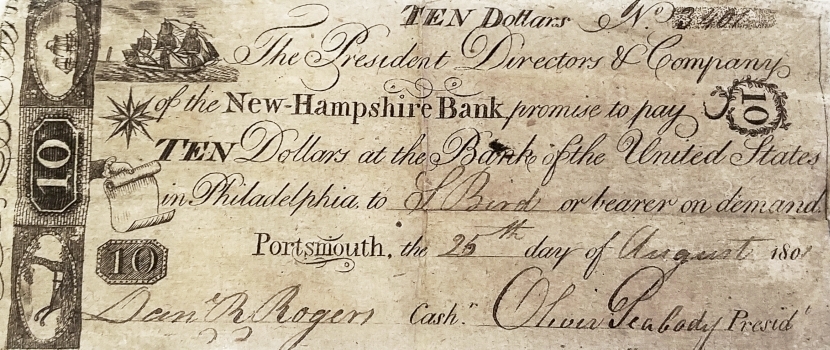
Counterfeit 10 Dollar Banknote
1804: Counterfeiters Arrested in New Boston!
by Jennifer M. Allocca
- Beverly Bank - 30 dollars
- New Hampshire Bank - 10 dollars
- Union Bank of Boston MA - 10 dollars
- Essex Bank of Salem MA - 8 dollars
- Portsmouth Bank - 4 dollars
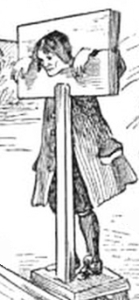 Per inspection of the bills it was determined that these were of excellent quality
and would have been passed easily without suspicion.
At the time of their arrest the men had between fifteen and twenty thousand dollars —
the equivalent of $425,000 in today's money!
They were taken to the jail in Amherst, NH until their trial later that month.
Per inspection of the bills it was determined that these were of excellent quality
and would have been passed easily without suspicion.
At the time of their arrest the men had between fifteen and twenty thousand dollars —
the equivalent of $425,000 in today's money!
They were taken to the jail in Amherst, NH until their trial later that month.
In MAY of 1804, the counterfeiters were arraigned at the Supreme Court, in Hopkinton, and pleaded "not guilty" to all of the indictments. The trial of the first of these men resulted in a verdict of "guilty," after the jury was out for only a few minutes.
"The Law was so clearly and forcibly laid down by the Chief Justice, that the remaining prisoners prayed liberty to withdraw their pleas, and to trust in the mercy of the Court, which was granted. They were sentenced to two and one-half years imprisonment... in addition to pecuniary fines. William Gilman and Timothy Call, having been before convicted of a similar crime, were further sentenced to stand in the pillory one hour each." (A pillory is a wooden framework with holes for the head and hands, in which an offender was imprisoned and exposed to public abuse.)
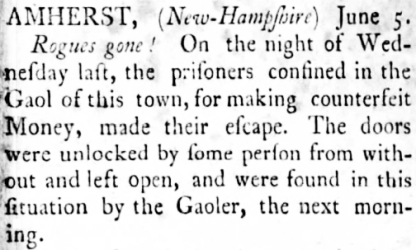 But wait, there's more!
But wait, there's more!I found an article from JUNE of that same year headlined "Rogues gone!" — the men arrested in New Boston had escaped from "gaol" in Amherst. (Jail was spelled "gaol" in the early 1800's.) The article indicates the escape to have been an inside job.
Several of the escapees "left manuscripts behind them, of a taunting threatening nature. Among other threats of their leader, the noted Timothy Call, was one that they would 'soon be in a situation to furnish the public with thousands, and perhaps millions' of this paper money."
I did some digging and found that Timothy Call was from Gilmanton, NH. He graduated from Dartmouth College, and was practicing law before he turned to counterfeiting.
What happened next?
An article from JULY 1804 stated that Timothy Call was spotted in Lebanon, NH near the Connecticut River:
"Finding himself likely to be overtaken, he rode towards a thicket, quitted his horse and furniture, and sought safety by concealment in the wood."
Later, in AUGUST, the same newspaper reported, in one sentence only: "Drowned, on the west side of Lake Champlain, the noted Timothy Call, of money-making memory."
Note: the articles I quote above were printed in The Weekly Wanderer, which was published in Randolph, VT from 1800-1810. To read a complete transcription of all articles related to the New Boston counterfeiters, please click here. It is interesting to note that there is no mention of John Lynch, other than the report of the arrest which occured at his house. His name is not listed among the men on trial.
Where was the home of John Lynch?
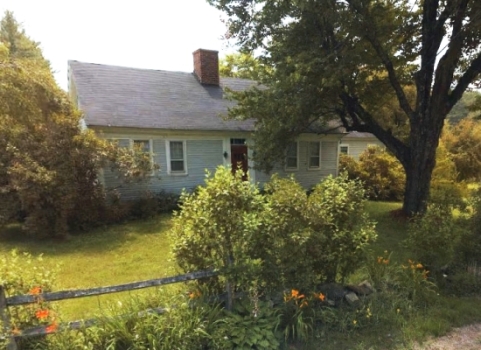
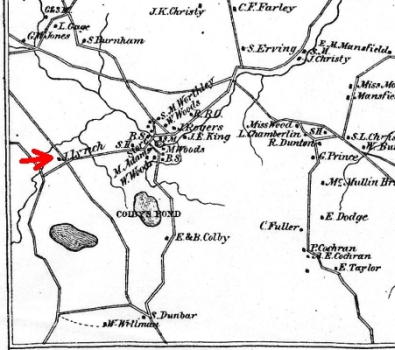
The Dilley house on the Francestown Turnpike in southwest New Boston once belonged to J. Lynch.
I believe that the same house still stands today — some of you may know it as the Dilley home, just a stone's throw away from where I live!
I spoke with my neighbor about this incident, which occurred over 200 years ago. I said that she should look for loose floor boards and wall panels for hidden loot!
About the author: Jennifer M. Allocca and her husband Brian moved to New Boston in 2017.
Counterfeit Money — The Bankers' Perspective
When Jennifer continued her research of the 1804 counterfeiters, she uncovered an interesting document which provided a different perspective of the same incident. Counterfeit money was a problem for the banks whose notes were copied; representatives of the banks affected by the New Boston counterfeiters met in April of 1804 at the Union Bank in Boston to discuss what should be done.We know this because in 1887 a man named Joseph Dane Tuck made a presentation to the Essex Institute, a "literary, historical and scientific society" in Salem, MA, sharing his file of correspondence among the bankers. You may read all the relevant pages from the "Bulletin of the Essex Institute" (Volume XX. 1888) in Mr Tuck's file of letters; we summarize the highlights below.
The report begins: "Mr. Tuck also showed admirably-done counterfeit notes on the Beverly Bank, printed at New Boston, New Hampshire, in 1804, on very thin, strong, linen paper made in Danvers. The ornamentation of the bills, at that early day, was unique. The $30 denomination bore both a hand loom and a power loom, symbolic of the high expectations then entertained of Beverly's pioneer venture in the spinning and weaving of linen, wool and cotton."
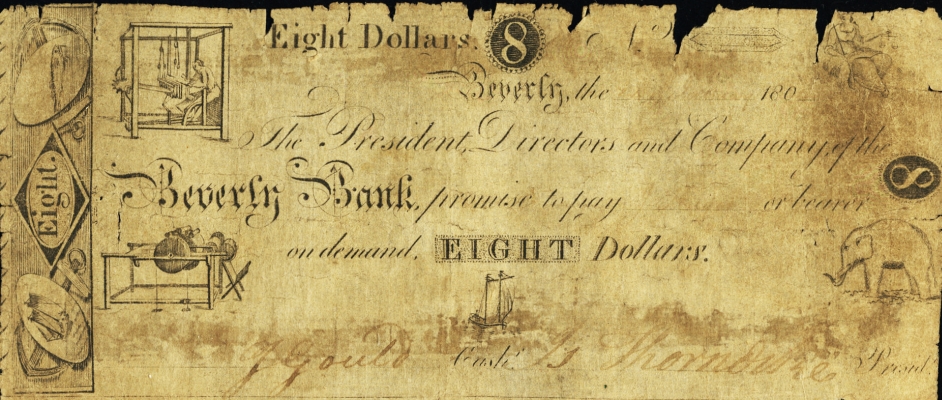
Genuine 8 Dollar Banknote — image courtesy of Heritage Auctions, HA.com
Highlights of the correspondence in Mr. Tuck's file of letters:
- The bankers were anxious to arrest a man named Peaslee, who engraved the New Boston plates, before he could flee.
- A witness who was needed to secure the convictions of the counterfeiters wanted $2,000 in payment.
- There would be other expenses in pursuit of counterfeiters; these costs should be shared equitably among the banks.
- Stanstead in the province of Quebec was recognized to be a nest of counterfeiters, just a few miles north of the American border.
- Some of the bailiffs whom the bankers might hire to arrest the counterfeiters were themselves suspect.
- Stephen Burroughs (originally from New Hampshire) was the most notorious of the Stanstead counterfeiters.
April 2019: If you enjoy a good mystery, here are questions which remain to be answered:
- What was John Lynch's connection to the counterfeiters, and where exactly did he live? The Dilley house is our best guess — it's located on the 2nd N.H. Turnpike, which was completed only a few years before 1804, to serve commerce that was legal or otherwise — but we have no definitive proof that this was the scene of the crime.
- Who tipped off the authorities about criminal activity in the home of John Lynch?
- Who helped the counterfeiters escape from the Amherst jail?
- What became of all the men involved in printing counterfeit money in New Boston, other than Timothy Call, who ended up in Lake Champlain?
